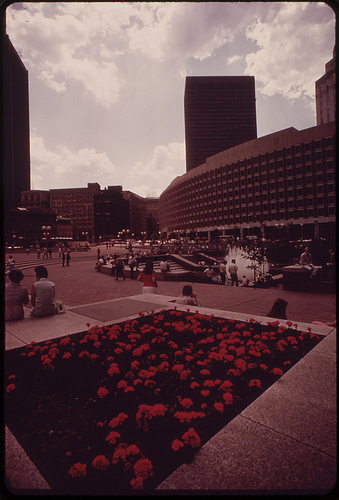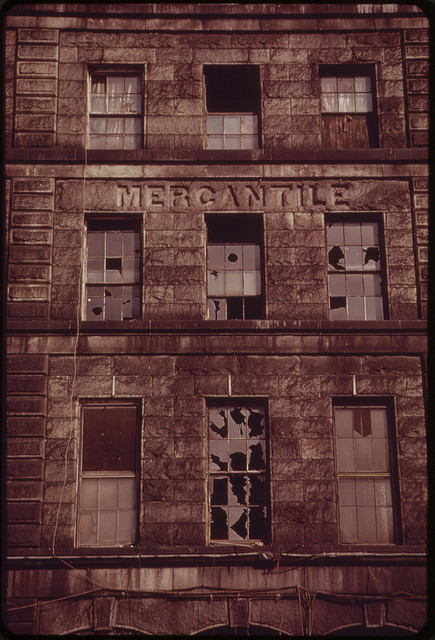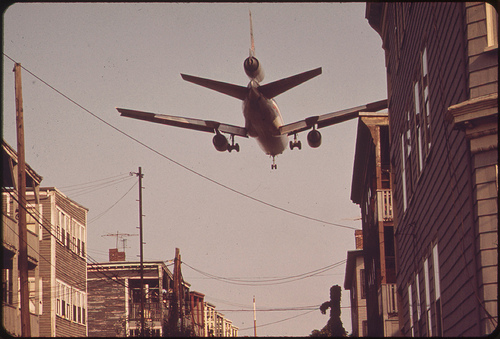
Photo of Boston’s City Hall Plaza in August, by Ernst Halberstadt, via US National Archives.
This is, let’s be honest, a very flattering picture of Boston’s City Hall Plaza, outside the Government Center subway station.
It’s also the latest in our series of posts on the Boston photos that came out of the Environmental Protection Agency’s Documerica project. One of the themes of photographer, Ernst Halberstadt’s photos were pockets of nature where Bostonians relaxed and cooled down (check out another fantastically pleasant-looking shot of City Hall Plaza) in the hot summer of 1973.
In fact, Boston’s brutalist city hall and surrounding Government Center Plaza, built in the 1960s by a team of three then-Columbia University architecture professors, Kalmann, McKinnell & Knowles is infamously unpleasant to spend time in. As Fast Co. Design charmingly puts it, “the red brick desert has utterly no redeeming social value.”
The group somehow though managed to win an international design competition for the building with their plan in 1962. McKinnell said the architects were drawn to concrete — not yet a common part of the urban landscape — to make a statement.
He told an interesting anecdote in an interview with Mark Pasnik for the Heroic project. (The project highlighted the concrete structures built from the founding of the Boston Redevelopment Authority in 1957 to the re-opening of Quincy Market in 1976, otherwise known as the catalog of buildings only an architect could love). In their conversation, McKinnell recalled running into renowned modernist architect Philip Johnson, of Connecticut Glass House fame shortly after winning the competition.
[W]e were walking along Madison Avenue, and we spied Johnson coming towards us, waving his arms in typical Johnsonian fashion. “Ah! I’m so happy for you two young boys who have won this competition. Absolutely marvelous. I think it’s wonderful. And it’s so ugly!” We thought that was the greatest praise we could get. And concrete certainly had something to do with that.
The EPA is returning to City Hall Plaza, this time with the Greening America’s Capitals project, which will rethink City Hall Plaza. Paradoxically, this may also be right in line with the architects’ original vision. Also from McKinnell’s interview with Pasnik:
As we all know, Boston’s mayor wants to sell or preferably tear down City Hall. But as Bill LeMessurier once said, it will take a controlled nuclear device to get rid of this building. So in a very real way, perhaps, we have made our legacy using concrete because it is so bloody difficult to get rid of … We were right in the sense that architecture had to be rethought as something which is long-lived and, over time, could be decorated, embellished, and adorned by subsequent generations.


 Ernst Halberstadt, Outdoor Food Market at Haymarket Square, via
Ernst Halberstadt, Outdoor Food Market at Haymarket Square, via 

 Airplane descends over Neptune Road homes to land at Logan Airport. Photo by Michael Phillip Manheim
Airplane descends over Neptune Road homes to land at Logan Airport. Photo by Michael Phillip Manheim